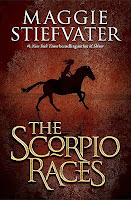The Invention of Hugo Cabret: Book Review
Bibliographic Information: Selznick, Brian. The Invention of Hugo Cabret. New York: Scholastic, 2007. ISBN 0439819813786
Plot Summary: Hugo lives in the walls of a Paris train station in which he takes care of the clocks. Stealthy Hugo must do what he has to in able to survive. Hugo has one hope left: to repair an automated man that he believes may have a message from his late father. With the help of a young girl, Hugo uncovers more secrets than he anticipated in this mysterious tale.
Critical Analysis: The beginning of the book instantly takes you to a clear night in Paris. The illustrations bring you to a bustling train station and introduce you to the stealthy Hugo. Hugo sneaks his way around the station to his hiding place behind the walls. The black and white illustrations set the mysterious mood and historical setting of 1930’s Paris. The pictures help narrate the story as you follow Hugo on his journey to fix the automaton.
Readers will root for Hugo as they get swept away in the magic of the black and white cinema with the descriptive language and photos taken from the movies. Young readers will want for someone to be kind to orphaned Hugo. This novel is a perfect picture book for middle-grade readers as they will identify with the characters in the story. The illustrations and real photographs from the period mixed in with the chapters make this book fast paced even at its long length of 533 pages.
The fictional story of Hugo blends magically with the cinematic life of Georges Mieles who was a real-life filmmaker. Brian Selznick does a brilliant job of bringing the real Georges Mieles and black and white cinema to a fictional story about a young boy in search of hope.
Caldecott Medal, 2008
Book Sense Book of the Year Award for Children's Literature, 2008
Flicker Tale Children's Book Award, 2009
From The NY Times writer John Schwartz “This is much more than a graphic novel: it is more like a silent film on paper.”
Neil Hollands of the Booklist Reader says “It’s a big, beautiful book with lots of atmospheric black and white pencil drawings, published lovingly on nice paper and with real sewn bindings.”
Connections:
Gather other Brian Selznick novels to read:
· Wonderstruck. ISBN 0545027896
· The Marvels. ISBN 0545448689
· The Houdini Box. ISBN 0689844514
Gather other Caldecott Medal Books to read:
· Santat, Dan. The Adventures of Beekle an Unimaginary Friend. ISBN 0316199982
· Floca, Brian. Locomotive. ISBN 1416994157
Watch the movie “Hugo” and compare it to the book.
Investigate the real George Melies that was a magician and a filmmaker. Write a brief biography of his life.
Investigate if the train crash that Hugo dreamt about in the Montparnasse train station and write a newspaper article featuring the event.
Explore black and white cinematography. Watch George Melies “A Trip to the Moon” on Youtube.
References:
Hollands, Neil "Review of The Invention of Hugo Cabret". Booklist Reader Reviews. American Library Association.
Selznick, Bryan. 2007. The Invention of Hugo Cabret. 2007. New York. Scholastic Inc. ISBN 0439813786
Schwartz, John. "Children’s Books." The New York Times. March 10, 2007. Accessed January 28, 2017. http://www.nytimes.com/2007/03/11/books/review/Schwartz.t.html.
References:
Hollands, Neil "Review of The Invention of Hugo Cabret". Booklist Reader Reviews. American Library Association.
Selznick, Bryan. 2007. The Invention of Hugo Cabret. 2007. New York. Scholastic Inc. ISBN 0439813786
Schwartz, John. "Children’s Books." The New York Times. March 10, 2007. Accessed January 28, 2017. http://www.nytimes.com/2007/03/11/books/review/Schwartz.t.html.




Comments
Post a Comment